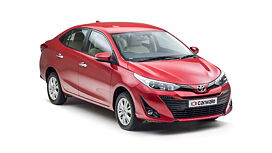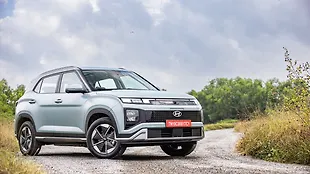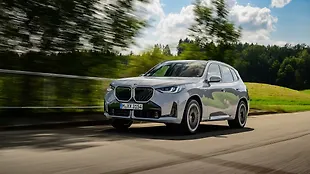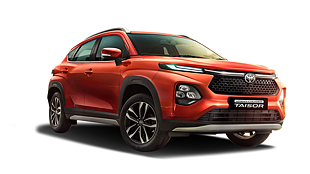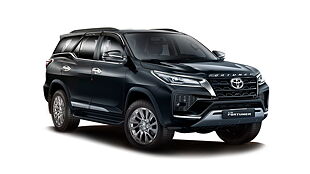Introduction

In our introductory story we told you why we are comparing touchscreen systems, how we’ve gone about doing it and finally the eight cars (and their touchscreen systems) that made it to our comparison list. Well, here are the touchscreen systems that made it to places 5, 6,7 and 8. If you want to jump directly to the winners of the test, then you can click here.
Honda City 160.8/400

Why I would touch it- Display angled towards the driver, 3D maps, fast charging.
Why I wouldn’t touch it- Low visibility in sunlight, weak colour schemes.
Emerging at the tail-end is Honda’s Digipad infotainment system. It has been beaten by Toyota’s infotainment system by just a point. On offer is a 6.96-inch display that’s actually angled towards the driver and this, together with a high placement, means easy access.

However, the display is not all that bright and when combined with a dark colour scheme, it results in not very good visibility in the sunlight.

The buttons are located on the side but the quality of plastics is low rent and buttons feel small and fiddly. It comes with an HDMI input, a USB port as well as a dedicated fast charging USB port. There is a large amount of space between the gear lever and the input ports and this means, your wires won’t foul with the shift lever.

This latest version of the Digipad system also sees the addition of Android Auto and Apple Car Play but no phone mirroring. We didn’t find any major bugs with the system and, in fact, the entire team was suitably impressed with the voice control function.

One of the major features that the Honda system has is the option of 3D maps which works but has low resolution. The steering interface is simple to use but divided into two parts and that means you have to shift your left hand to move between the volume controls and the phone controls.

In the music quality test, we found that the Honda system scored 2.5/5 which is pretty much average. The bass is good but the clarity in the vocals as well as the instruments was average and we could just about discern the sounds of the transitions in the song when it was played.
Toyota Yaris- 161.6/400

Why I would touch it- Gesture control, adjustable screen and DVD playback
Why I wouldn’t touch it- No Apple Car Play/Android Auto and poor score in sound quality test

Rated just one point above Honda is the infotainment system offered by Toyota. The display on this system is placed high and the backlighting is sufficient enough that visibility in sunlight is not an issue. There are no physical buttons, no haptic feedback or even dedicated surfaces for any of the functions. In the graphics department, this display has an extremely bright colour scheme with large icons. It is all easy to read but the graphics look outdated.

The USB port and HDMI input are both on the side of the display and it is good to look at, but it also means that the wires dangle over the gear lever. The Yaris gets the highest score in terms of features because the screen angle is adjustable and there is gesture control too, both of which are unique to the Toyota in this competition. In the case of the latter, it is not the most intuitive and adds more of a show value.

Toyota has not added Apple Car Play and Android Auto to this system and instead, it comes with a feature called Miracast that directly duplicates the display of your device. It also has built-in maps and this is the only car to be offered with a DVD player. The steering controls are slow to respond but the discernable lag from the time of pushing the button to response from the system is quite minor.

The music test saw the Yaris perform abysmally scoring just 1.83/5. We could hear none of the transitions in the song, the bass was inadequate and with volume cranked up, the sound got really harsh.
Mahindra Marazzo- 167/400

Why I would touch it- Good placement, emergency contact function
Why I wouldn’t touch it- Glossy display

Mahindra is new to this game. Well, sort of. They have had the Scorpio and the XUV500 in this neck of the woods for a while but the Marazzo is their new star and we have looked at the system offered with the MPV.

Thanks to a large dashboard top and air vents, the display of the infotainment system is placed low. However, display quality is quite good with bright colours and big fonts. This low angle suggests that there is good protection from sunlight. But, this display has a glossy finish and thus, will get caked with finger prints within a short time of being used.

It has dedicated touch points for all the major functions making this setup a mid-way point between having physical buttons and a one smooth screen for a fancy finish. The input ports in the Marazzo are placed low and away from the screen and this means you’re device is out of reach and sight and you are free of hanging wires.

Mahindra has put a lot into the features of the system. You get Apple CarPlay/Android Auto as well as a custom Mahindra interface when both of these aren’t activated. Also included in the package is maps and a system that scores your driving. Using the Blue Sense app, you can also save an emergency number. However, while the features list may be heavy and there is little ergonomic benefit to the way the screen is placed, the interface as a whole still lacks the refinement and simplicity.

The steering controls are fast to respond and you get a dual scroll setup with four buttons to access the functions, control volume and also activate the voice command functions. In the music test, the Mahindra system performed the worst of the eight with minimal sound in the second row and nothing in the third row. The entire song was flat and all the transitions that we expected barely came through.
Tata Nexon- 169.4/400

Why I would touch it- Colour schemes and easy to use interface
Why I wouldn’t touch it- Placement of input ports and steering mounted controls

Taking fifth place is Tata’s Connect Next infotainment system and it one of the three systems featured in this review with a floating display. The size of the display is small but is placed well and surprisingly, it is always at eye-level.

There’s a row of physical buttons and they have been placed under the air vents away from the display. The touch and feel of the buttons is really good but we didn’t like the positioning of the buttons because they are too far away from the display.

The Nexon has scored one of the lowest for placement of the input ports. The USB and AUX slot are positioned behind the gear lever in a deep recess. This is very fiddly to reach into and makes it a task to plug in anything. The system is entirely Apple Car Play/ Android Auto dependent including the voice commands function.

What we did like about the Nexon’s system is the interface and the graphics. The colour scheme of blue-over-black as well as the icon based layout of the home screen is very futuristic and matches the overall appearance of the Nexon as a car. It is easy to use and you get to wherever you need to go within just a few steps. There is, however, a noticeable lag when scrolling through the menus using the physical buttons as well as the screen display itself. It’s a similar story with the steering mounted controls.

In the music test, the Nexon’s Harman developed system (made specifically for Tata) is one of the mid-range performers with an average score of 3/5. There was clarity in the music and good bass but the vocals could not achieve their full potential.
Photos: Kapil Angane
Kaustubh Gandhi

